Aside from a certain subset of musicians, most Americans live a day-to-day life that is sadly free of brass music. In Serbia, however, any occasion is an excuse to bring out the horns. The joyous, off-kilter sounds of Balkan brass bands fill the air during weddings, births, housewarmings, funerals, and patron saint days. And every August, even in times of war and strife, Serbians celebrate the trumpet—or, more accurately, the flugelhorn—at the Dragačevo Sabor Trubaca, commonly known as the Guča Trumpet Festival, which brings more than half a million people to a tiny village in central Serbia for a riotous weekend of music and drinking.
“The Serbs would just let themselves go and feel totally immersed and totally ecstatic about the music.”
Over the last 30 years, a New York band named Zlatne Uste has been working to remedy the dearth of brass stateside. In the United States, Balkan brass music first blasted its way into popular consciousness during the multicultural movements of the 1970s, as intellectuals studied folk dances and music from around the globe. In 1983, a handful of musicians—all of whom fell in love with Balkan brass, but none of whom had any Serbian heritage—came together, forming Zlatne Uste (loosely translated as “Golden Lips”). In 2010, the band became the first American group to compete at Guča, where Serbians orchestras have long battled for the title of best band in the country.
“Because it was the 50th festival at Guča, the organizers switched things up,” says Matthew Smith, who’s played baritone horn with Zlatne Uste since 1989. “In addition to the national competition, they also hosted an international contest. For that, they invited bands from other countries to perform one Serbian tune and one tune from their native country, to compete against each other and the winners of the national festival the prior year.”

Top: Brass bands play anywhere and everywhere during the Guča Trumpet Festival, and the crowds love it. (Still from “Brasslands” courtesy of the Meerkat Media Collective) Above: Demiran Ćerimović and his orchestra play with the American band Zlatne Uste in the streets. (Via the “Brasslands” Facebook page)
The band’s journey caught the attention of Adam Pogoff, a public radio producer in New York City who has a B.A. in ethnomusicology focusing on Balkan and Romani music. He joined up with the filmmaking Meerkat Media Collective to make “Brasslands,” a feature-length documentary about the 2010 Guča festival, 11 years after NATO waged the Kosovo War against Serbia and Montenegro, known as the Federal Republic of Yugoslavia at the time.
“One of the musicians we’d been in contact with lost an arm in the war. He had to modify his baritone horns so he could play them with his left hand.”
“I found out this massive brass summit and competition was taking place in an area of the world that I’ve always wanted to visit, rural Serbia,” Pogoff says. “And I found out it was going to be the 50th anniversary, so it really was a no-brainer that I was going to go over there and document this momentous occasion. I also found out that my Balkan folk-dance instructor here in New York was traveling over there with his band Zlatne Uste to compete in the first international competition. So I had my story and I had this awesome destination, and that’s how I decided to make the film.”
Instead of focusing exclusively on the the Americans and the international contest, which was really a side attraction to the main event, Pogoff and the Meerkat collective also followed the central national drama: The ethnically Serbian, 25-year-old bandleader Dejan Petrović facing off with the Romani, 40-something bandleader Demiran Ćerimović, both past Guča winners, for the title of best band and best trumpeter in the country.

Dejan Petrović was the returning champ at Guča in 2010. His “blisteringly fast” western Serbian sound made him the one to beat. (Via DejanPetrovic.com)
Petrović, the champion from the year before, “was very much the one to watch when we were there,” Pogoff says. “He was known for playing blisteringly fast and having a clean, technically oriented sound” that’s characteristic of western Serbia.
Ćerimović, from southern Serbia, represents the Roma sound, developed by the Romani, known more broadly as “Gypsies,” one of the most oppressed minorities in the world. “If you could make a really broad, sweeping generalization about the Roma sound, you might say it is a more soulful style of playing,” Pogoff says. “While it’s still virtuosic, it feels like it has more heart. In the brass realm, this is where the Gypsies are kings. While they’re still discriminated against within Serbia, when it comes to music, they’re revered. They’re oftentimes the ones that are hired to play at a white person’s wedding because they’re regarded as the best.”

This sheep is presented, prepped, and served at a Serbian housewarming celebration Ćerimović performs at in “Brasslands.” (Still from “Brasslands” courtesy of the Meerkat Media Collective)
When Pogoff and the Meerkat collective met Ćerimović in 2010, he was rebuilding his orchestra, after living and performing in Sweden for a year. Despite his past accolades, his new band was an untested entity. Petrović, meanwhile, was the reigning champ from the year before. Both Ćerimović and Petrović felt the pressure to live up to their family legacies. “I think all the trumpet players do; most come from a long lineage of trumpet masters,” Pogoff says. And, in fact, Ćerimović’s son is continuing this tradition, playing in his father’s new band.
It is believed this Balkan brass tradition emerged in the early 20th century, around the time Serbia, Greece, Montenegro, and Bulgaria formed the Balkan League to battle the Ottoman Empire in 1912. “During the Balkan Wars, and then during World War I, military bands came through the area, playing mostly brass instruments,” Smith says. “These instruments were adopted by the Balkans, who created brass versions of pre-existing folk songs. In Serbia in particular, they embraced brass music to the extent that they consider it their national style of music.”

In Serbia, Balkan brass music is dominated by men, many of whom learn to follow in their father’s footsteps when they’re young boys. (Via the “Brasslands” Facebook page)
Smith understands why the Serbians revel in this sound. “The variety of rhythms is exciting,” he says. “Balkan brass bands have borrowed from the sounds from the Middle East, from Turkey, and even as far away as India to some extent, all of which have influenced the kind of meters and rhythm signatures that are in their music. For example, most American music is either in three time—like a waltz, one-two-three, one-two-three—or in four time—like rock music, one-two-three-four. Those are what you call an even meter because each of those beats contains two sub-beats, two pulses. Even if it’s in four and sounds like an eight, it’s always in twos or threes.
“The Balkan music will have beats that are sometimes one-and-a-half pulse beats long and that are sometimes one beat long, and they’ll combine them. They’ll have what we call a nine. But it will sound like, dat dat dat daaaaa. That last beat is one and a half times as long as the other beats, and that’s unusual. Or they’ll have an 11. They’ll have two standard beats and then one of the long beats in the middle and then another two beats. It’ll be dat dat daaaa dat dat, and they’ll build melodies on top of that. Also, there are scales that come from the Turkish and the Middle Eastern influences that are different from what we hear in the United States. It’s this very exciting, joyous party music.”

The rowdy party atmosphere of the Guča Trumpet Festival is often compared to Woodstock. (Still from “Brasslands” courtesy of the Meerkat Media Collective)
The rich, complex brass sound had such deep roots in Serbian culture that it was inevitable a small churchyard trumpet celebration in Guča, a village of 2,500, in 1961 would evolve into a Woodstock-esque mega-festival that now draws an estimated 600,000 attendees.
“It just got bigger every year as more bands from different parts of the country descended,” Pogoff says. “Then, it caught on in Western Europe. Now there are people from all over the world—Japan, United States, northern Europe—and the organizers say it brings in more than a hundred bands.”
The original members of Zlatne Uste met while attending dance and music workshops at the East Coast camp site of the Eastern European Folklife Center in Ashokan, New York. (That camp site has since moved to Rock Hill, New York. The organization also has a West Coast office in Berkeley, California, as well as a campsite in Mendocino, California.)

Zlatne Uste baritone player Don Godwin, at left, performs in Guča’s streets. (Via the “Brasslands” Facebook page)
“The group wasn’t precisely a match for the way the bands are orchestrated in the Balkans,” Smith says. “There was a flute player, an accordion player, and some other aspects that one really wouldn’t find in a Serbian brass band. But they worked on learning the music and establishing themselves. In 1985, they started a Balkan music and dance festival called the Golden Festival here in New York that’s been going ever since.
“We allowed for the possibility that the U.S. Navy Band could play in front of Serbs who we had just been at war with, had just been bombing, and receive at least a somewhat sympathetic response.”
“As they started to get better and play in public, they developed the dream of going to Serbia itself,” he continues. “They had heard about this large festival in Guča and, through a contact, found out how to get invited. In 1987, when Serbia was still a part of Yugoslavia, they were flown over, and the Serbians made a big deal of them. From the bands at Guča, they learned the more common configuration of Balkan brass bands, and when they came back, they changed some of the players in the group. In ‘89, there was another big change of Zlatne Uste personnel, and that’s when I joined.”
In the English-speaking world, the Serbian event is referred to as the “Guča Trumpet Festival” and the bandleaders are called “trumpeters,” even though they play the flugelhorns, rather than trumpets. (In the Serbian language, “truba” means both “flugelhorn” and “trumpet.”) Zlatne Uste usually plays horns from Czech manufactures like Cerveny or Amati or the German manufacturer Miraphone.

Some of Zlatne Uste’s oval euphoniums flanked by a flugelhorn on the right and a bobanj on the left. (Via the Zlatne Uste Facebook page)
“The three ‘trumpet players’ in our band are actually playing flugelhorns, rotary-valve horns with a conical bore that are about the same size and musical range as a trumpet,” Smith says. “The baritone horns, the midrange horns in Balkan brass bands, are playing typically oval euphoniums, also with rotary valves instead of piston valves. It’s a more European style of a horn. Our ‘tuba player’ is actually playing a helicon. It looks like a sousaphone in that you wear it. It’s a big circle that he can put over his shoulder, but instead of the bell having an extra twist that points forward, it just points to the side. All of those horns, from the baritone horns down, have bells that point off to the right. The horn players in Serbia, they will use that to change the volume as they play. They’ll either face towards the audience or face to the side, depending on what they want to do.”
Zlatne Uste has about 15 members, including five from the original band. But they rarely perform all at once, and they can play with as few as seven or eight members. They have four flugelhorn players, one of whom doubles on saxophone, and one other sax player; five baritone or euphonium players; one tuba or helicon player; three drummers; and a vocalist. (Zlatne Uste also stands out because the band has five female members, which is unheard of in Serbia.)

Zlatne Uste member Emerson Hawley plays a helicon in a New York practice space. He uses his body to point the horn’s bell, which determines how loud it will sound to the crowd. (Via the “Brasslands” Facebook page)
“One drummer will typically be playing a standard snare drum,” he says. “Another will be playing what’s called a bobanj, which looks like a smaller two-sided bass drum with less of a lip. They’ll use a heavy stick on one side so that it sounds a lot like a bass drum. But on the other side, they’ll use a light switch, a sort of a wicker and get a very high-pitched sound out of. And they’ll often have a cymbal mounted on top. Occasionally, a Balkan brass band will include a saxophone or a clarinet if they’re playing for something where that’s appropriate.”
When Zlatne Uste first arrived in Yugoslavia for Guča 25 years ago, as the first foreign band to perform at the festival, they literally got the red carpet treatment. Back then, foreign bands were not even considered for the competition.
“When they arrived, there was a red carpet rolled out on the tarmac, and another brass band was brought out just to play for them as they exited the plane,” Smith says. “A TV crew filmed that, and later, they were invited to play on a Serbian television program. In ’90, which was my first trip, the crowd started chanting ‘USA! USA!’ when we first took the stage at Guča, like it was the Olympics or something. They were that happy to see Americans taking an interest in their music.”

Demiran Ćerimović competes for the title for top trumpeter at the Guča Trumpet Festival in 2010. (Still from “Brasslands” courtesy of the Meerkat Media Collective)
For Smith, who had never left the United States before, it was an eye opening experience—and a lesson in spontaneity. “Things seemed less planned in Serbia. There was a greater sense of needing to be flexible and to accommodate changes in schedule.
“In the brass realm, the Gypsies are kings. While they’re still discriminated against, when it comes to music, they’re revered.”
“The festival itself was amazing,” he continues. “The Serbs are so involved in their music and so interactive with the band. A band would surround a group of people, say, sitting at one of these tables at a kafana—a tent that serves as a restaurant—and just play for that one table. Then maybe five tables over, another loud brass band would be playing different music in a different tempo, in a different rhythm for a different table of people. If the Serbs weren’t being played for, they didn’t interact. They just stayed talking to their people. But if they were at one of the tables that was being played for, they threw their hands in the air and slapped money on the forehead of people who were playing to tip them. Some would even stand on the chairs and dance. They would just let themselves go and feel totally immersed and totally ecstatic about the music.”
Indeed, the music and dancing go all night at this beer-fueled bacchanalia. Pogoff described his experience of the festival as “rowdy, with a lot of drinking. It’s very loud, too, as there are many brass bands playing around you at any given time,” he recalls. “It’s conceivable that there might be 10 different bands in your hearing radius. It’s a sensory overload. For somebody who doesn’t love to be around a ton of people, it can be difficult.”

Beer drinking is a big part of the Guča festival. (Still from “Brasslands” courtesy of the Meerkat Media Collective)
Even if Pogoff is an introvert, he was thrilled when he heard about Guča. While he has no Balkan or Romani heritage, he’s loved Balkan brass music since high school, so much so, he was inspired to get a degree in ethnomusicology. After he graduated, Pogoff kept taking classes to learn the “kolo,” the traditional circle dance performed to Balkan brass music. The members of Zlatne Uste are in the same boat.
“We were all born in America, except for one of our drummers who was born in Macedonia,” says Smith, who discovered Balkan music from his folk-dancer wife. “Everyone in Zlatne Uste came about it in a way that was similar to my path. At some point, we were introduced to Balkan music as adults or late teenagers and decided we liked it.”

Guča goes back to being a quiet village of 2,500 when the trumpet festival is over. (Still from “Brasslands” courtesy of the Meerkat Media Collective)
“If they were being played for, the Serbs threw their hands in the air, slapped money on the forehead of people who were playing to tip them.”
In fact, Zlatne Uste loved Guča so much, the band planned to keep going. But after they attended the 1987, 1988, and 1990 festivals, civil war broke out. “We were making plans to come in ’91 and then the Bosnian War started,” Smith says. “And America was boycotting Yugoslavia, so we were told not to go to there. It wouldn’t have been practical for us to go anyway. It was not a particularly safe place to be. That went on through 2001 when the fighting finally subsided in Serbia. Some of our band members went on their own in 2002, just to go see Guča and see how things were post-war. Then we went back as a band in 2003.”
As expected, the Americans did not get quite as warm a welcome as they’d had in 1987, as the United States had led NATO air strikes against Serbians in 1995 and 1999. “It was awkward to be in Serbia in 2003,” Smith says. “It seemed like the population was about half and half – half people who thought that the Bosnian War was disastrous and wished that Yugoslavia had had a more peaceful way of breaking up; and another half who were still firm supporters of former Yugoslav president Slobodan Milošević, firm Serbian nationalists who were upset with the United States. Other people were just upset in a general way because they personally experienced loss.

Demiran Ćerimović Orchestra approaches a flag-waver on a statue. The Guča Trumpet Festival is a big source of national pride, hence its not uncommon to see attendees waving the Serbian flag. (Still from “Brasslands” courtesy of the Meerkat Media Collective)
“One of the musicians we’d been in contact with lost an arm in the war,” he continues. “He had to modify his baritone horns so he could play them with his left hand. Regardless of how you might feel about the war, once a big tragedy like that happens to you, you can’t quite put aside your feelings. There are still buildings that are damaged in Belgrade. There are still people who were displaced, and it’s not something that just cures itself.”
“The Serbs were a little confused as to why I knew their national dance, but also impressed.”
When Zlatne Uste appeared on the Guča stage in 2003, they were booed. “But then we started to play a song called ‘Lipe Cvatu,’ which is a very popular song there. We could just see the crowd turn and start to cheer. They recognized that we were not coming from a point of view of ‘Hi, we’re the American band, and you should love us because we’re American.’ Instead, we let them know we are here because we love your music and we want to play your music for you and we hope you enjoy it. I think they responded to that.”
In 2009, Smith says, the United States Navy Band performed at Guča. “We sort of greased the wheels for America to return to Guča in a public way,” Smith says. “I think that allowed for the possibility that the Navy Band could play in front of Serbs who we had just been at war with, had just been bombing, and receive at least a somewhat sympathetic response.”

Ćerimović and Zlatne Uste flugelhorn player Catherine Foster riff off of together. (Still from “Brasslands” courtesy of the Meerkat Media Collective)
Despite the general ill-ease after the Bosnian and Kosovo Wars, Smith says he’s only felt unsafe there once, when a man at a table they played for showed them his handgun in 2003. “It’s mostly a very friendly place to be,” Smith says. “They opened their houses to us. They fed us. And we studied with Roma musicians there who just opened up their hearts to teach us music.”
Zlatne Uste has gotten close to Demiran Ćerimović, who is featured as a contender for the national competition in “Brasslands.” They’ve also made friends with bandleaders Ekrem Sajdić and Dejan Avdic. “And, of course, we’ve made friends with the other members of the bands, not just the leaders. Serbian band members taught our tuba player, our baritone players, our drummers, and so forth. We tend to lean toward music from south Serbia, from the Roma communities. Everything we know comes from them in one way or another.”

Zlatne Uste director and co-founder Michael Ginsburg plays flugelhorn with a member of Ćerimović’s band. (Via the “Brasslands” Facebook page)
By 2010, the political tensions had started to mellow out. “There was a little more distance from the war,” Smith says. “There was less of that sense that we were in front of a hostile audience. There’s still some anti-American sentiment. But by now, most people there know we’re not the government, that we’re just a bunch of Americans who like their music. And so they don’t take out any resentment that might still linger against the United States.”
Pogoff says that the Serbian people appreciate the sincere efforts of his film crew and Zlante Uste to understand their culture. “People were a little confused as to why I knew their national dance, but also pretty impressed,” he says. “We just come to the music from truly a joyous perspective. There’s something about it that we find arresting and contagious.
“I think more than anything, Zlatne Uste is respected and admired in Serbia for adopting another culture’s music and being very thorough and respectful of the music and the tradition,” he continues. “That’s the main message of ‘Brasslands,’ that despite whatever ethnic or political or cultural background, the music is uniting people. And there’s something about it that is attracting all these different sorts of people from all over the world. Music transcends boundaries.”
(To learn more about the film and its future screenings, visit the “Brasslands” web site or Facebook page. To see and hear Zlatne Uste, visit the band’s web page or the site for their Golden Festival, happening Jan 17 and 18, 2014, at Grand Prospect Hall in Brooklyn, New York. To find out more about Balkan music and dance in general, visit the site for the Eastern European Folklife Center.)

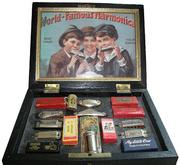
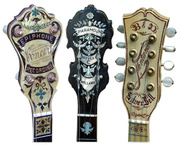 Youngbloods Guitarist Banana Talks Vintage Banjos and the Late Earl Scruggs
Youngbloods Guitarist Banana Talks Vintage Banjos and the Late Earl Scruggs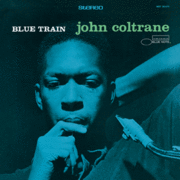
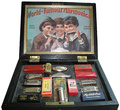 How a Gang of Harmonica Geeks Saved the Soul of the Blues Harp
How a Gang of Harmonica Geeks Saved the Soul of the Blues Harp Youngbloods Guitarist Banana Talks Vintage Banjos and the Late Earl Scruggs
Youngbloods Guitarist Banana Talks Vintage Banjos and the Late Earl Scruggs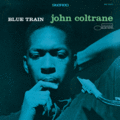 Secrets of the Blue Note Vault: Rediscovering Monk, Blakey, and Hancock
Secrets of the Blue Note Vault: Rediscovering Monk, Blakey, and Hancock TrumpetsThe trumpet is one of the oldest known instruments, dating back to the day …
TrumpetsThe trumpet is one of the oldest known instruments, dating back to the day … Musical InstrumentsWhether it's a clarinet or an accordion, a piano or a trombone, musical ins…
Musical InstrumentsWhether it's a clarinet or an accordion, a piano or a trombone, musical ins… Mari Tepper: Laying it on the Line
Mari Tepper: Laying it on the Line Nice Ice: Valerie Hammond on the Genteel Charm of Vintage Canadian Costume Jewelry
Nice Ice: Valerie Hammond on the Genteel Charm of Vintage Canadian Costume Jewelry How Jim Heimann Got Crazy for California Architecture
How Jim Heimann Got Crazy for California Architecture Modernist Man: Jock Peters May Be the Most Influential Architect You've Never Heard Of
Modernist Man: Jock Peters May Be the Most Influential Architect You've Never Heard Of Meet Cute: Were Kokeshi Dolls the Models for Hello Kitty, Pokemon, and Be@rbrick?
Meet Cute: Were Kokeshi Dolls the Models for Hello Kitty, Pokemon, and Be@rbrick? When the King of Comedy Posters Set His Surreal Sights on the World of Rock 'n' Roll
When the King of Comedy Posters Set His Surreal Sights on the World of Rock 'n' Roll How One Artist Makes New Art From Old Coloring Books and Found Photos
How One Artist Makes New Art From Old Coloring Books and Found Photos Say Cheese! How Bad Photography Has Changed Our Definition of Good Pictures
Say Cheese! How Bad Photography Has Changed Our Definition of Good Pictures Middle Earthenware: One Family's Quest to Reclaim Its Place in British Pottery History
Middle Earthenware: One Family's Quest to Reclaim Its Place in British Pottery History Fancy Fowl: How an Evil Sea Captain and a Beloved Queen Made the World Crave KFC
Fancy Fowl: How an Evil Sea Captain and a Beloved Queen Made the World Crave KFC
Great story Lisa! =)
GREAT ARTICLE…I have loved this spirited music for years…particularly the genius of Goran Bregovic. Also this music can be found in the award winning Serbian film Black Cat white Cat (1998) by the great Emir Kusterica. Once you listen to it you will never forget it.